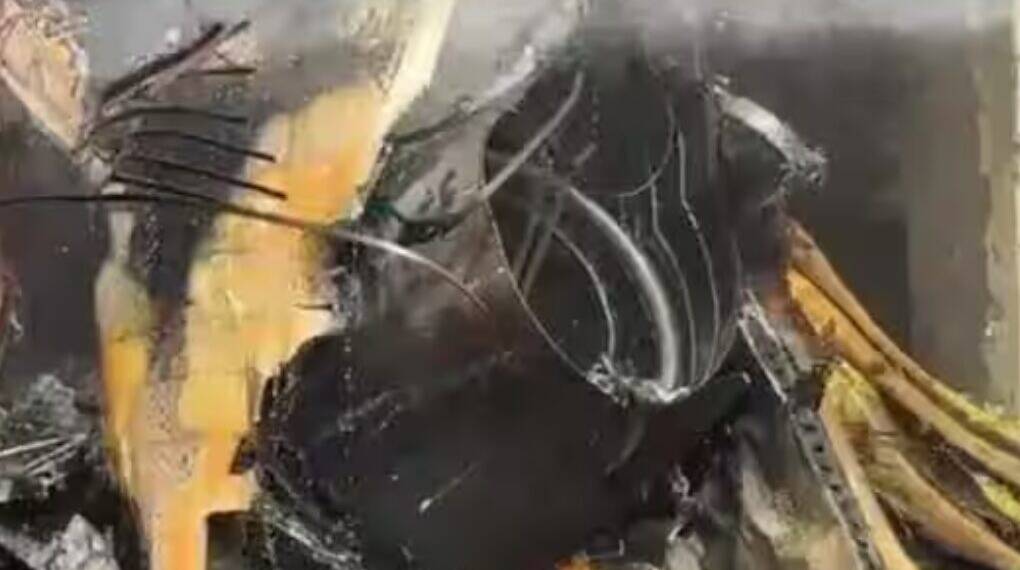On July 21, 2025, a Bangladesh Air Force (BAF) F-7 BGI training jet crashed into Milestone School and College in Dhaka’s Uttara area, killing at least one person and injuring dozens, many of whom were students.
The incident has sent shockwaves through the densely populated capital, raising questions about the safety of low-flying military aircraft and the reliability of Chinese-made jets.
Details of the Crash
The F-7 BGI, a Chinese-made fighter jet used primarily for training, took off from a nearby airbase at 1:06 PM for a routine training mission, according to the Inter-Services Public Relations (ISPR) department.
Merely 24 minutes later, the aircraft, piloted by Flight Lieutenant Taukir Islam Sagar, plummeted into the Milestone School and College campus in Uttara’s Diabari area, striking the junior section where nursery to third-grade students were attending classes.
The jet crashed near the school gate, hitting a building identified as Haider Hall, and sparked a massive fire, with thick black smoke visible from a distance.
The F-7 BGI and the Ongoing Concerns with Chinese Aerospace Technology
The F-7 BGI (701), a Chinese-made fighter jet based on the aging MiG-21 platform, has once again drawn scrutiny following its recent crash in Dhaka. A derivative of outdated Soviet design, the F-7 is widely regarded as obsolete and mechanically unreliable — a reputation reinforced by a series of high-profile failures in both training and combat scenarios.
Bangladesh currently operates several variants of the F-7, including the FT-7MB Airguards and F-7BG interceptors, with 16 F-7BGIs introduced into service in 2013. An additional 36 units were donated by China in 2022, expanding the fleet but raising further concerns about the platform’s reliability.
The jet involved in the recent crash — identified as F-7 BGI (701) represents the second BAF crash involving this model in 2025, following a similar incident over the Bay of Bengal in June. A prior crash in Tangail’s Madhupur region in 2018 also involved an F-7, underscoring a pattern of operational failure.
Criticism of the F-7’s performance extends beyond Bangladesh. During the India-Pakistan conflict after Operation Sindoor, Pakistan Air Force F-7s reportedly struggled to counter Indian air defenses, with multiple losses attributed to mechanical breakdowns and outdated avionics.
Compounding these failures, China’s much-touted PL-15 air-to-air missiles allegedly misfired, with one even landing intact inside Indian territory — exposing serious flaws in guidance systems and quality control.
The F-7’s key issues include:
Mechanical unreliability: Recurring engine and avionics malfunctions, demonstrated by repeated accidents in BAF operations.
Outdated design: The MiG-21-based airframe lacks modern safety systems, making it unsuitable for current low-altitude training or combat missions.
Poor manufacturing standards: Inconsistent quality control in Chinese production lines has led to the use of defective components, further degrading safety.
This latest incident further erodes trust in Chinese military hardware, particularly at a time when Beijing is seeking to strengthen defense ties with countries like Bangladesh and Pakistan through arms sales and donations.
As criticism mounts following the failures of Chinese platforms in real-world scenarios, such as the India-Pakistan conflict, the Dhaka crash may become another symbol of China’s faltering aerospace ambitions — raising tough questions for partner nations relying on Beijing’s defense exports.
Broader Implications
The crash underscores ongoing concerns about the reliability of Chinese-made military equipment. The F-7 BGI’s repeated accidents could damage China’s reputation as a supplier of military hardware, especially as Bangladesh relies heavily on Chinese jets for its air force.
The reference to earlier setbacks during the India-Pakistan conflict suggests broader skepticism about the efficacy of Chinese technology in high-stakes scenarios.
The incident exposes critical safety concerns about military training operations in urban areas and the reliability of Chinese-made aircraft. As investigations proceed, Bangladesh must address these issues to prevent future tragedies, while the community rallies to support the victims and their families in this moment of profound sorrow.








